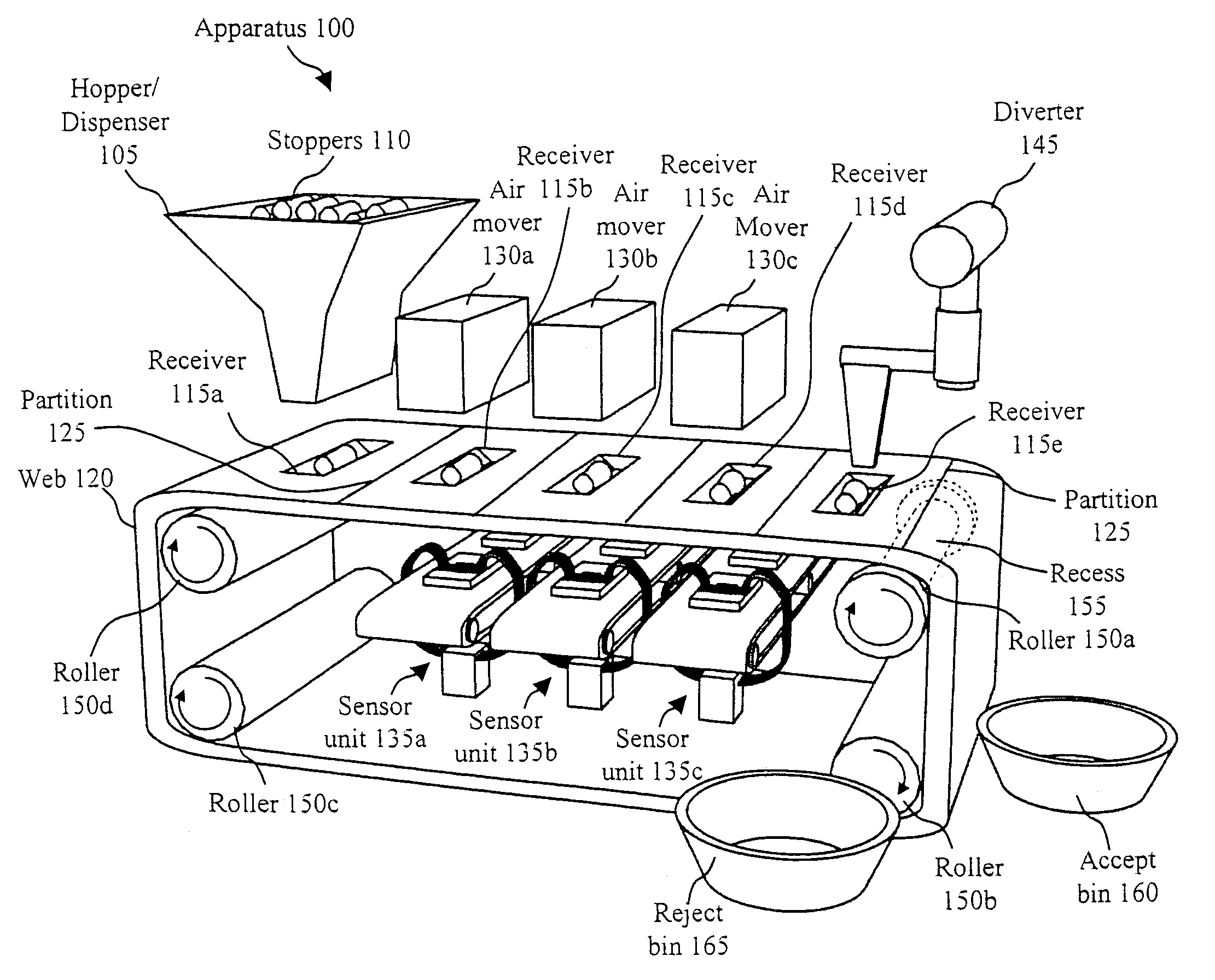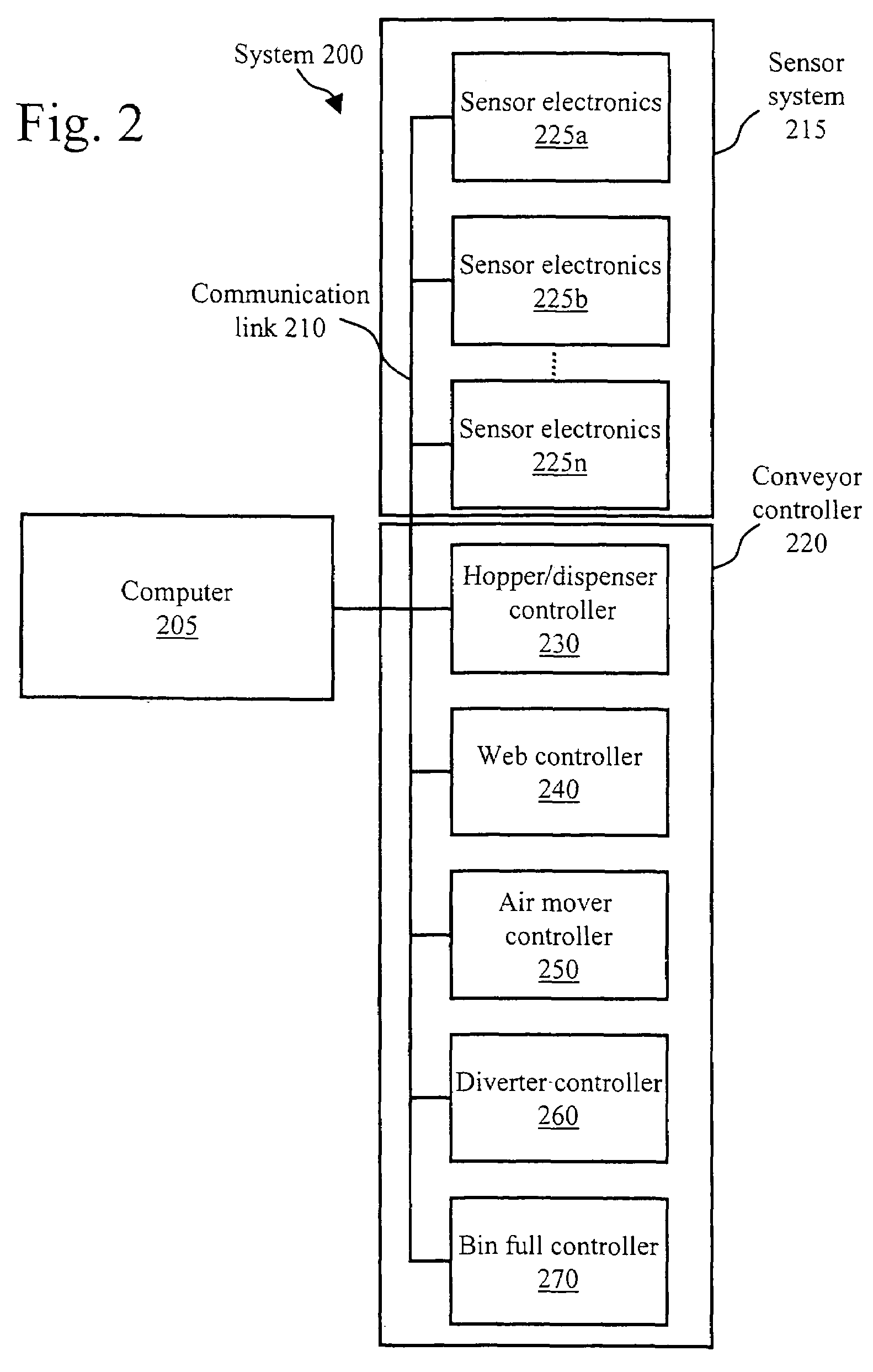Apparatus and method for detecting an analyte
an analyte and apparatus technology, applied in the field of apparatus and methods for detecting analyte, can solve the problems of high cost, adverse effects of cork stoppers, and most bottled wines, both inexpensive and expensive, and achieve the effect of reducing the cost of cork stoppers and reducing the risk of contamination
- Summary
- Abstract
- Description
- Claims
- Application Information
AI Technical Summary
Benefits of technology
Problems solved by technology
Method used
Image
Examples
Embodiment Construction
[0020]Generally, the present invention is an apparatus and method for detecting an analyte and, more particularly, assessing and monitoring items, such as cork stoppers, for the presence of one or more chemical contaminants or other analytes using electronic noses or other sensors. In one embodiment, the invention uses sensors and detection sensor electronics that are separate from one another such that inexpensive sensors may be reused or discarded with a rejected item. The testing apparatus moves the sensors and items independently to align a sensor and item with a detection sensor unit and / or move each sensor into electrical contact with the detection sensor electronics.
[0021]The testing apparatus may utilize multiple sensor units to simultaneously test multiple items (e.g., cork stoppers) for a chemical contaminant (e.g., TCA). The invention provides a low-cost, reliable testing process for testing up to 100% of the items at production speed in a cost-effective way that is scala...
PUM
| Property | Measurement | Unit |
|---|---|---|
| flexible | aaaaa | aaaaa |
| chemical analysis | aaaaa | aaaaa |
| gas chromatography | aaaaa | aaaaa |
Abstract
Description
Claims
Application Information
 Login to View More
Login to View More - R&D
- Intellectual Property
- Life Sciences
- Materials
- Tech Scout
- Unparalleled Data Quality
- Higher Quality Content
- 60% Fewer Hallucinations
Browse by: Latest US Patents, China's latest patents, Technical Efficacy Thesaurus, Application Domain, Technology Topic, Popular Technical Reports.
© 2025 PatSnap. All rights reserved.Legal|Privacy policy|Modern Slavery Act Transparency Statement|Sitemap|About US| Contact US: help@patsnap.com



